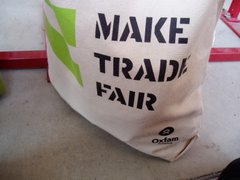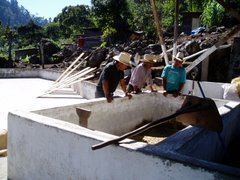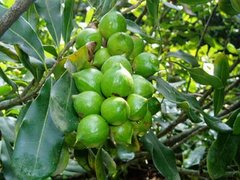
Attention to environmental sustainability in coffee production has formalized measures for soil and water conservation, including composting, terracing, reforestation and diversification. Indeed, since the circumstances of the coffee industry have worsened with expansive, high-yield production leading to capitalist crisis, a rationale for highlighting and returning to traditional methods of smaller-scale cultivation has emerged in the form of a specialty coffee industry with new markets for “sustainable” and “Fair Trade” coffees. Presumably, commodity environments for Fair Trade and sustainable coffees not only foster an environment conducive to subsistence and family labor, but also to natural resource conservation. In some countries rustic coffee farms have been classified as forests or are viewed as important buffer zones around biosphere reserves. On the other hand, technified cultivation of coffee, by removing pre-existing forest or crops, is viewed as fragmenting the landscape and eliminating the natural capital elements of a seemingly pre-capitalist space. Cultivation categories, like organic and other commercial polycultures, fall somewhere in the middle of a hierarchy of coffee production methods as hybrid forms of agriculture.
A massive drop in coffee prices in recent years has had a devastating impact on the economies of Latin American countries, particularly those of Central America. Though the coffee industry is not unaccustomed to periods of crisis and other market side effects that influence commodity slumps, gluts and booms, the current situation is particularly severe. With prices hanging steady at historic lows for most of the past four years, social costs have been great in many coffee-producing areas. In Guatemala devastating loss of work has led to conditions of starvation and increased migration (Hernández Navarro 2004; Brosnan 2003). Causes of the global coffee crisis can be traced to processes of agricultural modernization and increased competition that have resulted in world over-production as well as a discontinued system of quotas that once steadied the price of the commodity worldwide. Changes in coffee production introduced almost fifty years ago created a trend toward intensive monoculture cultivation on large plantations. Increased yields associated with this production method have contributed to a 200 percent increase in worldwide coffee production since 1950 (WRI 1998). Moreover, in the early 1990s the World Bank advised Vietnam to increase its output of low quality coffee for export. Amazingly, the country has achieved a 400 percent increase in production over approximately 10 years (Eco-Exchange Jun-Jul 2001).
In its 2002 report Mugged: Poverty in Your Cup, Oxfam International determined that global coffee exports had fallen by $4 billion over five years (Sep 2002). Rainforest Alliance reports that in countries like Guatemala, where coffee has been the leading export for decades and “700,000 families or 20 percent of the population have coffee-related jobs,” total exports fell by a half in the first year of the coffee crisis (Eco-Exchange Jun-Jul 2001). Guatemala’s National Coffee Association (ANACAFE) estimated a loss of $300 million in revenues as the crisis began (Eco-Exchange Jun-Jul 2001). With thousands of coffee pickers now unemployed, many have migrated to Mexico or the United States in search of work. Indeed, families in the highlands of Guatemala have few employment opportunities other than coffee plantation labor. The Guatemalan government indicates that there are more than 250 thousand unemployed due to the coffee crisis; out of 1.8 million agricultural sector jobs in the country, only 145 thousand have formal employment (Prensa Libre Nov 12 2003). Exacerbated by the dramatic fall in coffee prices, unemployment in agricultural areas of the country has surpassed 50 percent.
Meanwhile, North American consumer campaigns for Fair Trade coffees, with their boycotts and public protests, have propelled Fair Trade advocacy to the status of “pet project of the anti-globalization movement” (New York Times Nov 3 2002). Even so, a 2002 joint report of the Inter-American Development Bank, United States Agency for International Development and World Bank captures the recent tendency of market-oriented development groups to embrace Fair Trade as an acceptable niche solution to the coffee crisis.






No comments:
Post a Comment